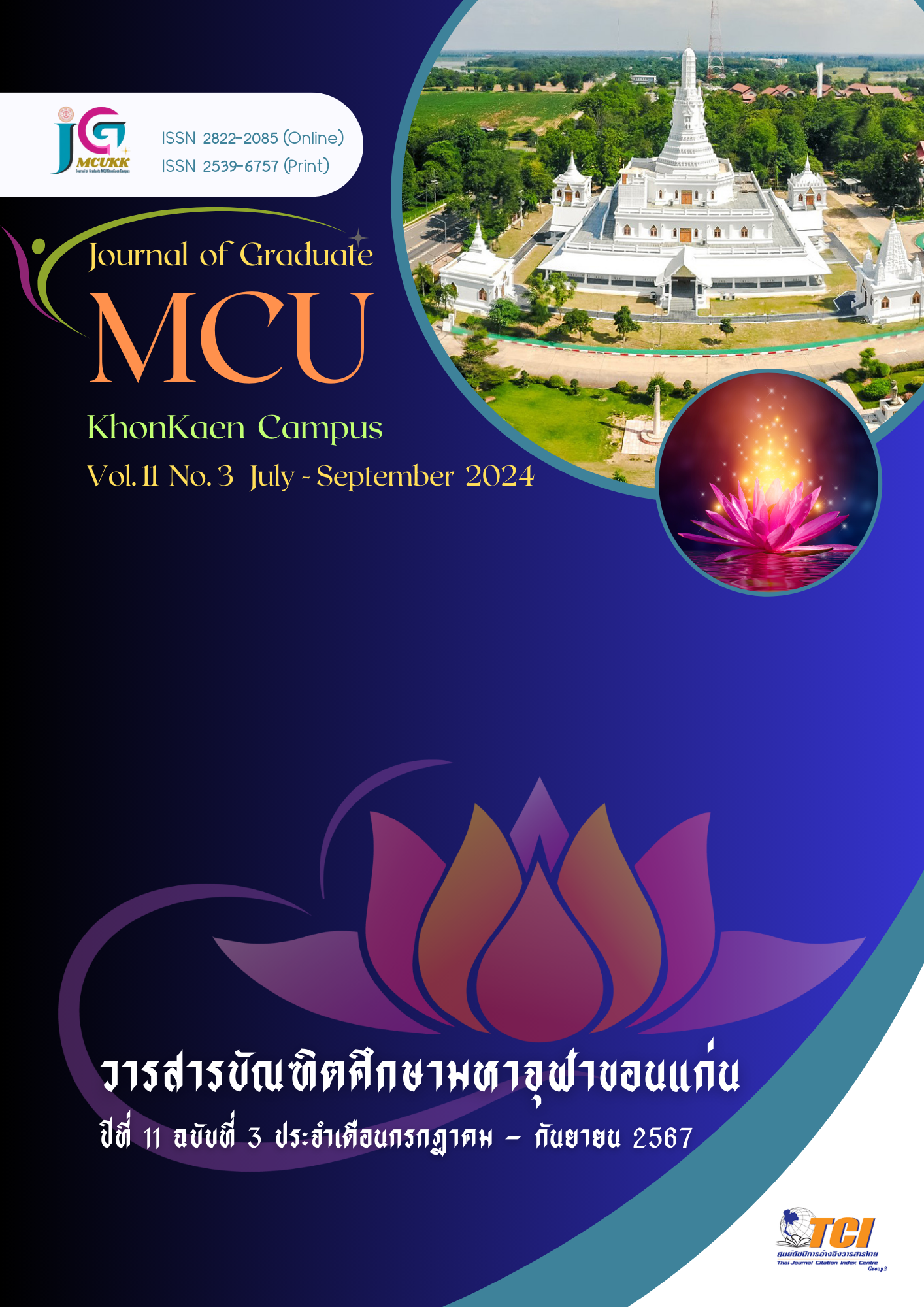The Relationship Between Innovative Leadership of School Administrators and Educational Innovator of the Teachers Under Phuket Primary Educational Service Area Office
Main Article Content
Abstract
The purposes of this research are to: 1) study innovative leadership of school administrators and educational innovator of the teachers under the Phuket Primary Educational Service Area Office 2) study the relationship between innovative leadership of school administrators and educational innovator of the teachers under the Phuket Primary Educational Service Area Office. The sampling groups consisted of 266 teachers in schools under the Phuket Primary Educational Service Area Office. They were selected based on the Krejcie and Morgan's sample size determination. A constructed 5-level
rating scale questionnaire with the reliability of 0.96. The statistics used to analyze data were frequency, percentage, mean, standard deviation and Pearson’s product-moment correlation coefficient.
Finding reveal that:
1) Innovative leadership of school administrators under the Phuket Primary Educational Service Area Office was at a high level ( x = 3.97, S.D. = 0.72) of overview. The highest mean score was vision to change, following by team work and participation, innovative organization. and the lowest mean score was creative thinking. and educational innovator of the teachers under the Phuket Primary Educational Service Area Office was at a high level ( x = 4.07, S.D. = 0.70) of overview. The highest mean score was observation, following by connecting to action, creative originality, experiment. and the lowest mean score was asking questions and finding the answer.
2) The relationship between innovative leadership of school administrators and educational innovator of the teachers under the Phuket Primary Educational Service Area Office was indicated positive correlation at level as highest (r = 0.876) with statistically significant at the 0.01 level.
Article Details

This work is licensed under a Creative Commons Attribution-NonCommercial-NoDerivatives 4.0 International License.
References
จีราภา ประพันธ์พัฒน์. (2560). การศึกษาภาวะผู้นำเชิงนวัตกรรมของผู้บริหารสถานศึกษาตามความคิดเห็นของครูสังกัดสำนักงานเขตพื้นที่การศึกษาประถมศึกษาปทุมธานี. (วิทยานิพนธ์ศึกษาศาสตรมหาบัณฑิต). ปทุมธานี: มหาวิทยาลัยเทคโนโลยีราชมงคลธัญบุรี.
ธัญญวรรณ บุญมณี, วีระยุทธ ชาตะกาญจน์ และ ชูศักดิ์ เอกเพชร. (2565). ความสัมพันธ์ระหว่างภาวะผู้นำเชิงนวัตกรรมของผู้บริหารสถานศึกษากับความเป็นนวัตกรการศึกษาของครู สังกัดสำนักงานเขตพื้นที่การศึกษามัธยมศึกษา เขต 13. วารสาร มจร.อุบลปริทรรศน์, 7(2), 365-378.
นวพร ชลารักษ์ และคณะ. (2564). องค์ประกอบความเป็นครูนวัตกรในการศึกษายุคดิจิทัลเพื่อการพัฒนาท้องถิ่นอย่างยั่งยืน. วารสารราชภัฏเชียงใหม่, 22(3), 94-108.
บุญชม ศรีสะอาด. (2545). การวิจัยเบื้องต้น. (พิมพ์ครั้งที่ 7). กรุงเทพฯ: สุวีริยาสาส์น.
วสันต์ สุทธาวาศ. (2559). การพัฒนาโปรแกรมเสริมสร้างศักยภาพความเป็นนวัตกรการศึกษา. Veridian E-Journal, Silpakorn University, 9(2), 194-215.
เวียงวิวรรธน์ ทำทูล และ วัลลภา อารีรัตน์. (2557). ภาวะผู้นำเชิงนวัตกรรมของผู้บริหารที่ส่งต่อองค์การขีดสมรรถนะสูงของโรงเรียนในสังกัดสำนักงานเขตพื้นที่การศึกษามัธยมศึกษา เขต 21. วารสารศึกษาศาสตร์ มหาวิทยาลัยขอนแก่น, 37(13), 31-38.
สำนักงานเขตพื้นที่การศึกษาประถมศึกษาภูเก็ต. (2565). แผนปฏิบัติการประจำปีงบประมาณ พ.ศ. 2566. ภูเก็ต: สำนักงานเขตพื้นที่การศึกษาประถมศึกษาภูเก็ต.
สำนักงานเลขานุการของคณะกรรมการยุทธศาสตร์ชาติ. (2561). ยุทธศาสตร์ชาติ พ.ศ.2561-2580. กรุงเทพฯ: สำนักงานคณะกรรมการพัฒนาการเศรษฐกิจและสังคมแห่งชาติ.
สำนักงานสภาพัฒนาการเศรษฐกิจและสังคมแห่งชาติ สำนักนายกรัฐมนตรี. (2565). แผนพัฒนาเศรษฐกิจและสังคมแห่งชาติ ฉบับที่ 13 (พ.ศ. 2566 – 2570). กรุงเทพฯ: สำนักงานสภาพัฒนาการเศรษฐกิจและสังคมแห่งชาติ สำนักนายกรัฐมนตรี.
สุจิตรา หนูงาม, อัจฉรา นิยมาภา และ สุชาดา นันทะไชย. (2563). ภาวะผู้นำเชิงนวัตกรรมของผู้บริหารที่ส่งผลต่อคุณภาพการปฏิบัติงานของครูโรงเรียนเตรียมอุดมศึกษาพัฒนาการนนทบุรี สังกัดสำนักงานเขตพื้นที่การศึกษามัธยมศึกษา เขต 3. การประชุมวิชาการระดับชาติ มหาวิทยาลัยวงษ์ชวลิตกุล, 1729-1738.
อรพิน อิ่มรัตน์ และ สุทธิวรรณ ตันติรจนาวงศ์. (2561). ปัจจัยที่ส่งผลต่อภาวะผู้นำเชิงนวัตกรรมของผู้บริหารสถานศึกษาในสังกัดสำนักงานเขตพื้นที่การศึกษาประถมศึกษาชลบุรี เขต 3. การประชุมเสนอผลงานวิจัยระดับชาติ มหาวิทยาลัยสุโขทัยธรรมาธิราช ครั้งที่ 9, 300-312.
Krejcie, R. V. & Morgan, D. W. (1970). Determining sample size for research activities. Educational and Psychological Measurement, 30, 607-610.
Likert, R. (1967). The Method of Constructing and Attitude Scale: Reading in Attitude Theory and Measurement. New York: Wiley & Son.

